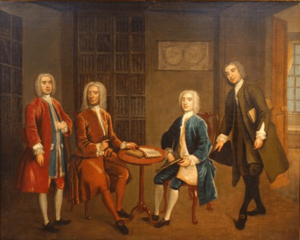Robert Gay (MP) facts for kids

Robert Gay (around 1676–1738) was an important English surgeon and politician. He lived in London and later in Bath. He was a member of the British House of Commons, which is like a part of the government, from 1720 to 1734. He was also a Fellow of the Royal Society, which means he was recognized for his contributions to science.
Contents
His Life Story
Robert Gay started his education at Jesus College, Cambridge in 1693. He got married twice. His first wife was Mary Saunders, and they married in 1699. Through this marriage, he gained control of Walcot Manor, a large estate near Bath. Later, by 1708, he married Margaret Farmer.
A Career in Medicine
Robert Gay was a skilled surgeon. He worked at St Bartholomew's Hospital in London for many years. From 1708 to 1719, he was an Assistant Surgeon. Then, from 1719 to 1729, he became a full Surgeon at the hospital. He also helped manage money as the Treasurer for Christ's Hospital School. In 1718, he was chosen to be a Fellow of the Royal Society. This is a very old and respected group for scientists and thinkers.
Time in Politics
Robert Gay also served as a Member of Parliament (MP) for the city of Bath. He was first elected in 1720 during a special election. However, he lost his seat in the general election of 1722. He ran again in the 1727 general election and was re-elected as the MP for Bath. He decided not to run for election in 1734.
Building Bath's Future
Robert Gay played a big part in shaping the city of Bath. He owned a large area of land called Barton Farm, which was part of his Walcot estate. He leased this land to a famous architect named John Wood the Elder. Wood used this land to build some of Bath's most beautiful and well-known areas. These include Queen Square, Bath and Gay Street, Bath. Gay Street was actually named after Robert Gay himself! John Wood had wanted to build these grand buildings since 1725, but other groups in the city had made it difficult for him.
His Later Years
Robert Gay passed away on October 31, 1738. He had one son and two daughters. After his death, his Walcot estate, which was so important for the development of Bath, was passed down to his daughter Margaret, who was from his second marriage.

